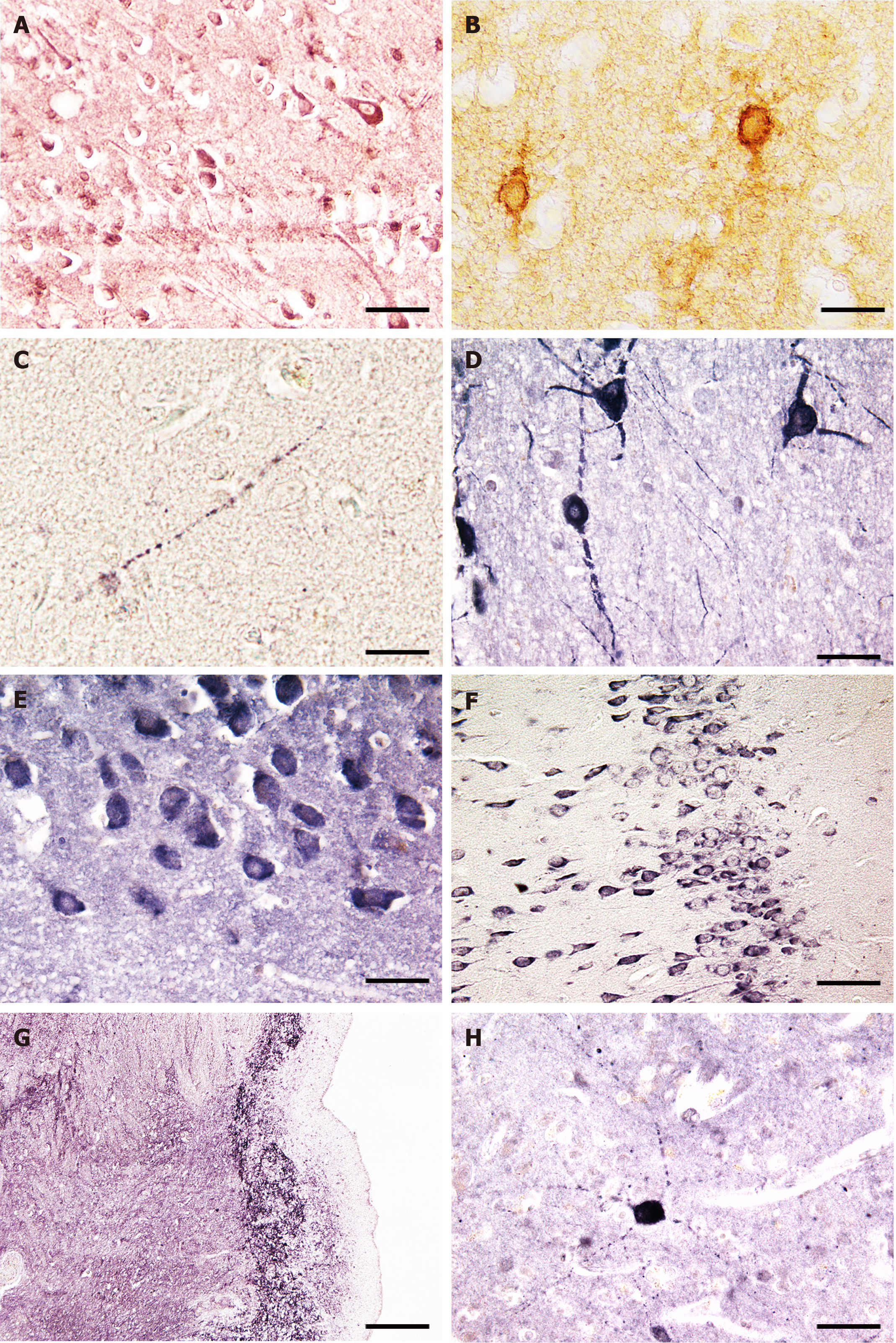Copyright
©The Author(s) 2021.
World J Psychiatr. Dec 19, 2021; 11(12): 1177-1190
Published online Dec 19, 2021. doi: 10.5498/wjp.v11.i12.1177
Published online Dec 19, 2021. doi: 10.5498/wjp.v11.i12.1177
Figure 1 Cellular localization of polyamine-metabolizing enzymes and antizyme inhibitor 2 in human and rat brain with nickel-enhanced streptavidin-biotin immunocytochemistry.
A: Ornithine decarboxylase immunoreactive neurons of the human prefrontal cortex. Bar = 70 µm; B: Antizyme inhibitor 2 expressing neurons in the human prefrontal cortex. Bar = 30 µm; C: Antizyme inhibitor 2 immunoreactive fiber in the human temporal cortex. Note the typical pearlchain-like structure as already described by others[18]. Bar = 20 µm; D: Strong spermine oxidase immunoreactive neurons in the human hypothalamus (interstitial nucleus). Bar = 30 µm; E: Multiple spermine oxidase expressing neurons in the CA2 region of the human hippocampus. Bar = 30 µm; F: Spermine oxidase expressing neurons in rat medial prefrontal cortex. Bar = 55 µm; G: Low power microphotograph of agmatinase immunoreactivity in human habenula. Bar = 140 µm; H: Single agmatinase immunopositive neuron in the human insular cortex. Bar = 30 µm.
- Citation: Bernstein HG, Keilhoff G, Laube G, Dobrowolny H, Steiner J. Polyamines and polyamine-metabolizing enzymes in schizophrenia: Current knowledge and concepts of therapy. World J Psychiatr 2021; 11(12): 1177-1190
- URL: https://www.wjgnet.com/2220-3206/full/v11/i12/1177.htm
- DOI: https://dx.doi.org/10.5498/wjp.v11.i12.1177









